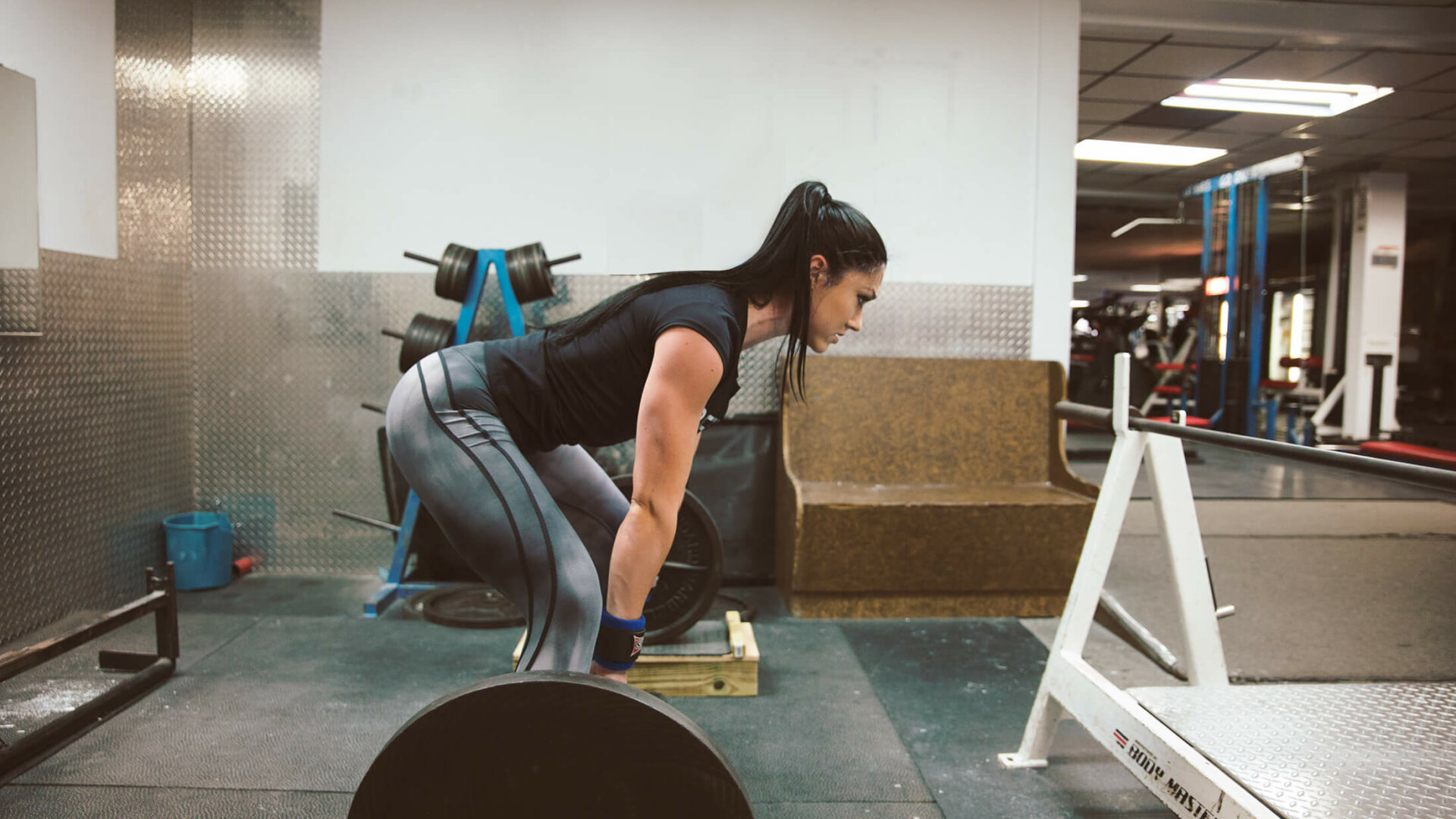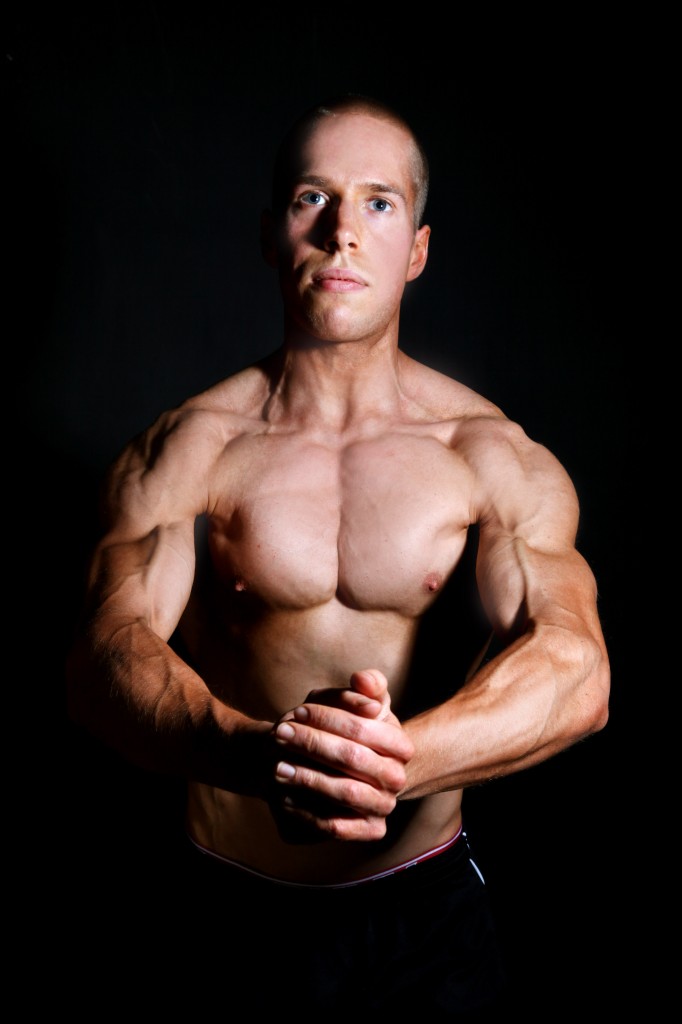The myth that women and men need to train drastically different is slowly dying a long-awaited death.
Thankfully, we’re getting past the stage where people believe that women need to train with ultra-light weights for high reps, or that they should stick solely to machines, and avoid free-weights or a high-protein diet for fear of bulking up.
While this change is very welcome in the evidence-based fitness community, it has lead to a huge generalization that men and women should train exactly the same.
Cards on the table time:
If a woman who wanted to get stronger, build some lean muscle and lose fat took a generic routine, or a program aimed at a male lifter and followed it to the letter, they’d get results, but those results wouldn’t be optimal.
While the basics of programming stay the same, there are some small (but significant) differences that any woman serious about lifting needs to take into account.
Put the Big Rocks First
The big rocks of training are the same regardless of gender, age, training experience and goals.
If you want to increase strength and size, or train to maintain muscle and strength in a cut, then you need to –
- Perform mostly compound moves
- Use at least 60-70% free weights
- Train using a variety of rep ranges, alternating between strength, power, hypertrophy and endurance, with the frequency of each dependent on your goals.
- Hit muscle groups or lifts twice a week or more.
- Push yourself, working to around an RPE of 8 to 9 on most sets, in most sessions.
Man or woman, 17 or 70, powerlifter or bodybuilder, the above are going to stay the same when programming.
When we’re talking about gender-specific training though, there are four ways that women need to tweak their programs just slightly to achieve optimal results.
So if you’re reading this as a lady who lifts, you’re a trainer who coaches women, or you’re on the lookout for how your girlfriend, Mom, sister or friend needs to plan their program, take note of the following paragraphs.
Change #1: Women Need More Volume
It might pain for most guys to admit it, but women have better recovery capabilities.
This means that they need lest rest between sets, (even heavier sets using higher percentages,) and less rest between sessions.
On top of this, women can usually do more sets and more reps at a certain percentage of their one rep max than a male can.
It’s for this reason that women should be doing more in each session, as well as over the course of each week and training block.
You can do this by adding in extra exercises, or simply performing an extra set or two.
Let’s take a typical lower-body session as an example:
Original session –
- Squats – 4×6 at 80% 1RM
- Deadlift – 2×8 at 75% 1RM
- Lunges – 3×10 at RPE 8
- Lying Leg Curls – 2×12 at RPE 9
- Standing Calf Raises – 3×15 at RPE 9
Female-specific session (option 1) –
- Squats – 5×6 at 80% 1RM
- Deadlift – 3×8 at 75% 1RM
- Lunges – 4×10 at RPE 8
- Lying Leg Curls – 3×12 at RPE 9
- Standing Calf Raises – 4×15 at RPE 9
Female-specific session (option 2) –
- Squats – 5×6 at 80% 1RM
- Front Squats – 3×5 at RPE 8
- Deadlift – 3×8 at 75% 1RM
- Deficit Deadlift – 2×6 at 75% 1RM
- Lunges – 3×10 at RPE 8
- Lying Leg Curls – 2×12 at RPE 9
- Standing Calf Raises – 4×15 at RPE 9
The actual studies on this argument are limited. But recently, I interviewed several top female coaches, including Laurin Conlin and Dr. Kori Propst, and they, along with the vast majority of others said that anecdotally, they’ve noticed women respond best to higher volume. While researching this piece, I also found articles by Greg Nuckols, Tony Gentilcore, Bret Contreras and Brad Schoenfeld all saying the same thing.
This could be partly due to the fact women have higher levels of estrogen, and estrogen tends to aid with recovery and anabolism [1][2].
Change #2: Women Need More Single-Leg Work
Everyone can benefit from single-leg exercises such as lunges, split squats and step-ups, but women even more so.
Due to females’ genetic structure, the knee joints are more prone to injury, particularly when it comes to the ACL [3]. While bilateral leg movements (squats and deadlifts and their variants) are still superior for building total strength, and potentially muscle mass too, single-leg work is incredibly useful in evening out strength imbalances, and strengthening the ligaments and tendons around the knees, thus reducing injury risk.
You can program this in a multitude of ways, including adding it into your current lower-body sessions, or make one leg session each week single-leg specific.
While you won’t be able to safely test maximums to work out percentages, you can’t go wrong with some strength-based work for between 5 and 8 reps (lower than 5 reps per set is likely to be too taxing on your balance to make it effective,) and some in the hypertrophy range of 8-12 reps.
Aim to get a 1:1 ratio of knee-dominant to hip-dominant single leg workout throughout the week.
Knee-dominant exercises –
- Single-leg leg press
- Bulgarian split squats (bodyweight, dumbbells or barbell)
- Step-ups (bodyweight or dumbbells)
- Lunge variations – forward, reverse, walking, or front foot elevated
- Pistol squats
Hip-dominant exercises –
- Single-leg deadlift
- Single-leg back extension
- Single-leg glute bridge
- Single-leg hip thrust
You can put these after your main bilateral strength exercises, or, provided you’re not fatiguing yourself too much with them, have them as a warm-up to increase activation.
Change #3: Women Don’t Want to Look Manly
Not really – that headline is seriously tongue in cheek, but most women do have different physique goals to males.
Take figure and bikini athletes for example – the glutes and shoulders play a much more important role than the pecs and arms.
Even women who don’t compete usually don’t want big, muscly thighs, or to be particularly wide in the torso, so these altered goals are going to call for a change of focus, a drop or an increase in volume on certain body parts, and even some mixing up of exercises.
If you’re a woman who wants to build a great set of glutes without bulking up your quads for instance, then you might want a greater emphasis on exercises like glute bridges, hip thrusts, sump deadlifts and pull-throughs than you do on squats and leg presses.
Likewise, if you don’t particularly want to grow your chest and shoulders, but would like bigger, more shapely arms, then keep your upper-body pressing volume down, and increase your chin-ups, dips, and arm isolation moves.
Change #4: Altering for Monthly Cycles
Your time of the month has the potential to both sabotage and supercharge your training.
For most women, there will be times during your period when you feel aggressive and energetic, and it’s here when you should be going heavier with your loads, and shooting for PRs, or getting more higher-intensity work in.
At other times you’ll be drained, lethargic and hungry, and it’s okay to ease back in the gym here. Either just drop your volume and loads, or even take it as a deload.
The important thing here is to note how you feel during different stages of your cycle, and plan your workouts around this.
The Take Home? Change the 10%
90% of a training program can stay the same, regardless of gender.
Provided you’ve got a sensible routine and manage your nutrition correctly, whether or not you get results depends on how much effort you put in, and how consistent you are.
That said, if you want the best results as a female lifter, then some small changes to make your program specific to your increased recovery capabilities, your tolerance for more volume, your genetic structure, your individual goals and your monthly cycle will go a long way in helping you get maximum possible results from your gym time.

